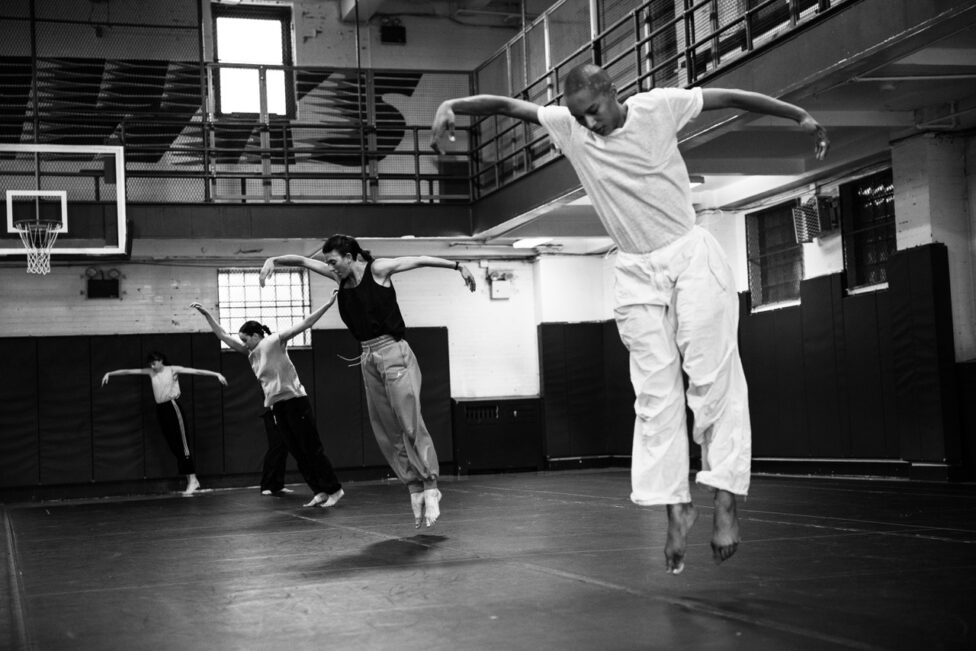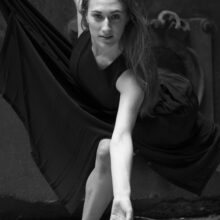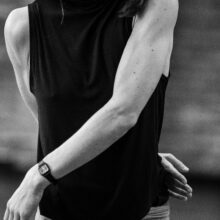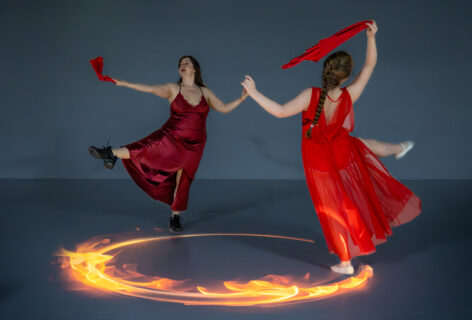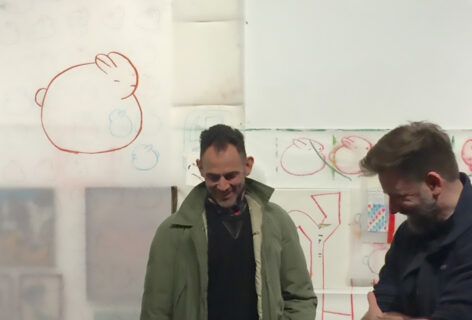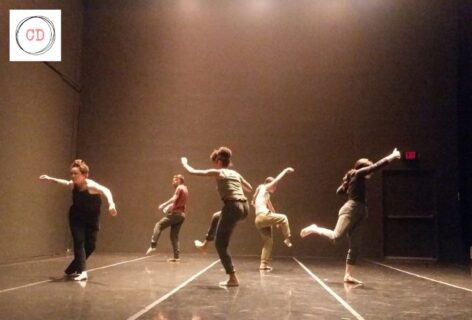When I was a kid growing up on the Jersey Shore, my mom would take me to dance performances at our local theater on the campus of Monmouth College (now Monmouth University). There, I was introduced to the format of a dance company—a group of people convened to demonstrate an individual’s choreographic vision. I distinctly remember seeing the Nai-Ni Chen Dance Company moving in punctuated swirls in shared time, but not in unison. I was probably under 10 years old. Today, my fascination with the design of a “dance company” continues. This month, we have invited two rehearsal directors to talk about the complex work of retaining and conveying choreographic ideas through generations.
Both Greta Campo and Cecily Campbell have recently stepped into roles managing choreographic and cultural transmission for dance-makers. After being a company dancer for six years, Greta was promoted to Associate Artistic Director of the Nai-Ni Chen Dance Company in 2018, but this role has taken on new responsibilities and possibilities since Nai-Ni Chen’s abrupt passing in 2021. Cecily has been moving into the role of Rehearsal Director over the past year, and has been a dancer with the Trisha Brown Dance Company since 2012, prior to Trisha’s passing in 2017.
As they push forward to carry on the legacy of respective cultural forms, these two dance practitioners are wading through a field of logistical complexity and ever-evolving sentiments of hope, loss, confusion, patience, and promise. Greta and Cecily met for the first time in October for this proposed conversation. Their dialogue thinks with the past, the present, and the future as the material of dancing. Perhaps even better, their dialogue shows us the relieving possibility of true lateral friendship across our field.
—Londs Reuter, CC Co-editor
This conversation has been edited for the purpose of publication.
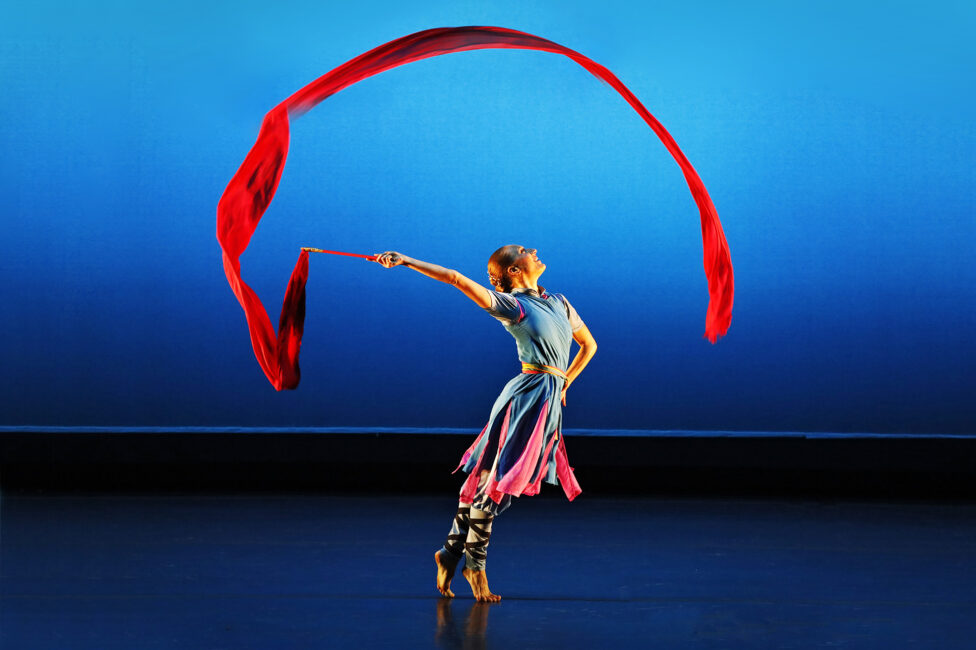
Greta Campo
How are you preparing to hold on to this new position as a rehearsal director for the Trisha Brown Dance Company? Do you see challenges ahead?
Cecily Campbell
It’s been a gradual shift over the past year. The beginning of this season has been a formal arrival. I’ve had the pleasure of spending a little bit more time with Carolyn Lucas, the company’s Associate Artistic Director, sharing time with her both inside the studio and outside of studio research. I’m getting a much more in-depth view into how she prepares for rehearsals in the short term and the long term. With her, I’m going through the archives of the company’s video materials, and learning how she makes notes and logs the pieces and keeps track of how she wants to guide the work in the studio. So that’s been wonderful. There’s so much to learn there.
She was really generous and helpful in showing me where her thinking was and where her interests were. Then when I went to teach the material to the company, it was coming directly from that research. I felt like I had my feet in both places. Hopefully it helps the dancers learn and understand the material a little bit more, get a sense of where it’s coming from in Carolyn’s research, and then get the information kinetically. I feel like I’m just going to continue to learn as we go.
GC
It’s so new, right? You just started this year. Like anything it takes time to become confident.
I got promoted to Associate Artistic Director in 2018. I had the privilege to work a little bit closer with Nai-Ni Chen for a couple of years, because I joined the company as a dancer in 2012. But then, her passing actually happened so suddenly that I was not prepared to lead a company. In the beginning, it was emotional. We had a very busy season coming ahead of us with the Chinese New Year season starting in January.
When her husband, Andrew Chiang asked me if I wanted to take on the role of artistic director and also rehearsal director, I felt it was a mission to keep her legacy alive because she hadn’t really prepared any succeeding figure. She was the one there all the time doing everything. I’ll try my best to lead the dancers and keep her legacy alive as much as I can.
One of the challenges that I see is to train her style to the new dancers that joined the company and had never worked with her. Her style is quite unique: she has backgrounds in both traditional Chinese dances and modern dance. The new dancers are less familiar with Eastern philosophy and movements. Even though I was with her for so many years, it was still tough to teach that while keeping the details in the movement. New company members are good dancers, but it takes time to really root the style into their body.
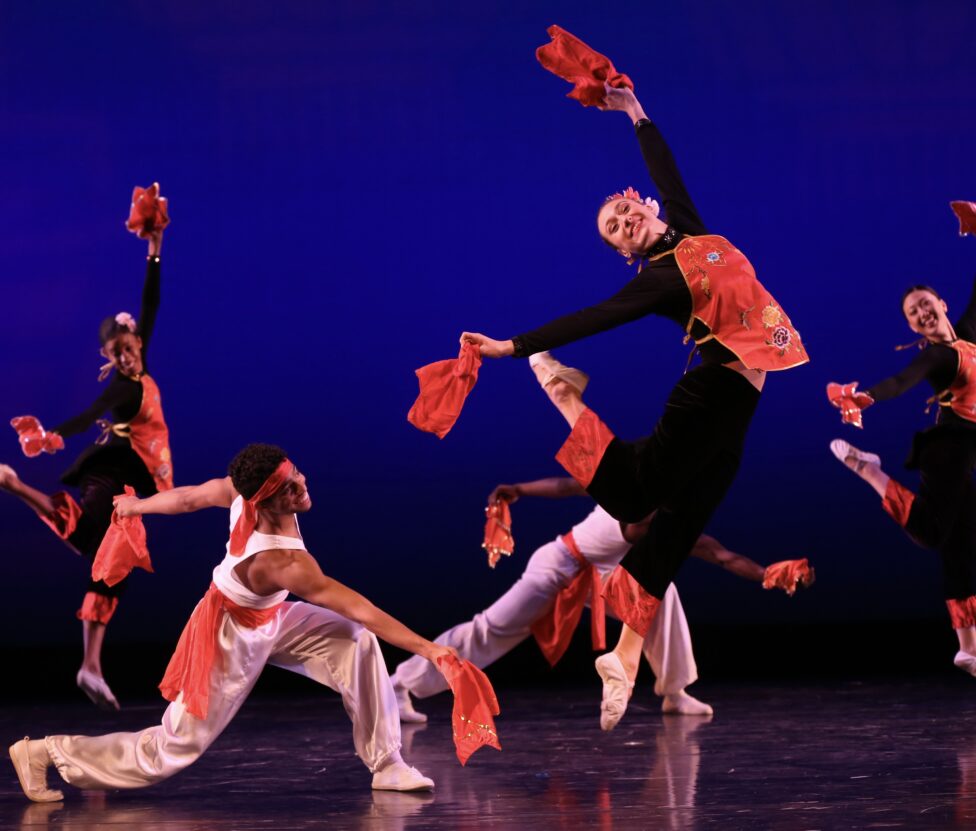
CC
Is it possible to maintain a training program or kind of an orientation separate from putting people into the repertoire?
GC
Nai-Ni always had her company class, but during Covid, we started to develop her technique class, which is called Kinetic Spiral. The same goes for her rep. It’s a mix between modern, ballet, and her Chinese traditional training, mixed with Tai Chi and Martial Arts. We started to really dig into her technique through phrases from our rep. It is based on breathing exercises, tension and release, and the flow of energy in the movement. We’re also trying to expand into the dance community. We had two summer intensives already. We wanted to push into that direction because the work is so unique. We also work with props. This year was the first time we offered a prop class such as martial art fan or ribbon. It was very successful.
As far as how we’re conducting the company…. in addition to myself as an artistic director, we have to consider her diverse background. Even though I’ve done traditional Chinese dances, I needed a figure to help me out with that because, you know, I’m not Asian. So we have a director of traditional dances, Ying Shi, who comes in sometimes especially for those programs and also to train the dancers in Chinese training. With Nai-Ni, we didn’t really have a lot of traditional Chinese training classes, only the basic and fundamental elements. She really just wanted to mix it together. But I feel now that we need to dig a little bit more into the Chinese traditional technique.
CC
Yeah, that seems right…
GC
Right? Nai-Ni also used to choreograph every year. She had a few collaborations with other choreographers, but she was not hiring other choreographers. And I’m not a choreographer.
We also have a director of creative new work and contemporary work PeiJu Chien-Pott. For now, she has worked with artists that had already collaborated with Nai-Ni. One is Polish choreographer Jacek Luminski. Of course, he came here and created a new piece. We also had a new collaboration with Rokafella and Kwikstep. They are pioneers of hip hop. We have this traditional lion dance piece that always opens our shows for the Chinese New Year. And we transformed it into a hip hop version. It was very successful, and the audience really liked it. So for now, PeiJu has been working with those artists. That’s how the company is splitting the roles. But I’m the one who is there all the time, rehearsing with them and showing up to any program.
CC
It sounds like there are ways that you and your team are finding to make the company grow, but always with this sense of her legacy and honoring and respecting that. Having this variation on the lion dance now, and having this traditional Chinese training, and it’s inspiring to hear that you seem to have found a beautiful balance of expansion and really staying rooted with her.
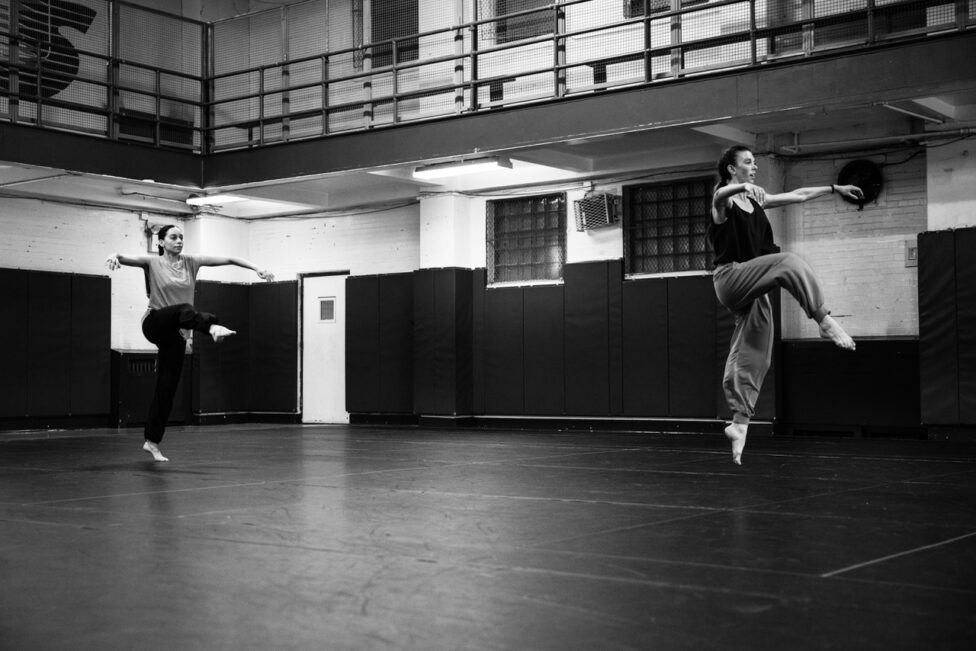
GC
Do you want to share how the company is beginning to commission other choreographers to make work on the company?
CC
Yeah, sure. It’s been a long road for the company to figure that out, and I think there was some uncertainty, understandably, about whether to continue to try and continue only inside the body of Trisha’s work, how, and if, to invite people in. We want to be thoughtful and conscientious about how and when to make that step—to open the door to new people—and I’m happy that the company took the time it did to make that decision.
Now we’ve had two new commissions. Judith Sánchez Ruíz was the first, who was a former member of the company. And Noé Soulier was the latest commission from last year. We have two more in the works. There are just learning curves all over the place, but it’s been exciting. The main question is not so much why we are bringing new people into commissioned work on the company, but more how we are thinking about the conversation between a new work and Trisha’s work. I think the worst version of that is a comparison or trying to vie for space. I think the best version is something that really allows or leaves a lot of space for a new choreographer coming in to feel that they have support and freedom and that there’s no assumption or pressure to make a Trisha Brown piece. That’s not good for them, and it’s not good for us. It’s not a respectful way for anyone.
It’s been wonderful to have new works because younger generations of the company have never been in a creation process. It’s really a nourishing element for the dancers inside to have the experience of creating something as Trisha’s company did for many many years with her, for us to have a taste of that process within the company. It changes how you experience the other dancers. You make new connections, new discoveries. Having some ownership over a piece of the repertory has been interesting as well.
GC
When you work with a new choreographer or artist, do you give them the freedom to express themselves, or do you come up with a theme or a source of inspiration, and then you talk to them?
CC
It’s a good question. I have not actually been directly involved with any of the selections. There’s an artistic committee, which is a group of people selected to have those conversations. My understanding is that we, the company, do not offer any themes or ideas. There’s often a conversation about what rep the company would be performing at the same time that a new commission would be on, so that the choreographer coming in knows which Trisha pieces will be there. We just do that so that the choreographers and we know the landscape that we’re working together in. Sometimes, perhaps knowing that could spark certain ideas or research on their end.
GC
Freedom is very important. Looking ahead to the future of the company, I would like to preserve the legacy and have a choreographer that could have both backgrounds. It’s also hard to impose something. Maybe it’s an open conversation with the artist or choreographer who is going to work with us.
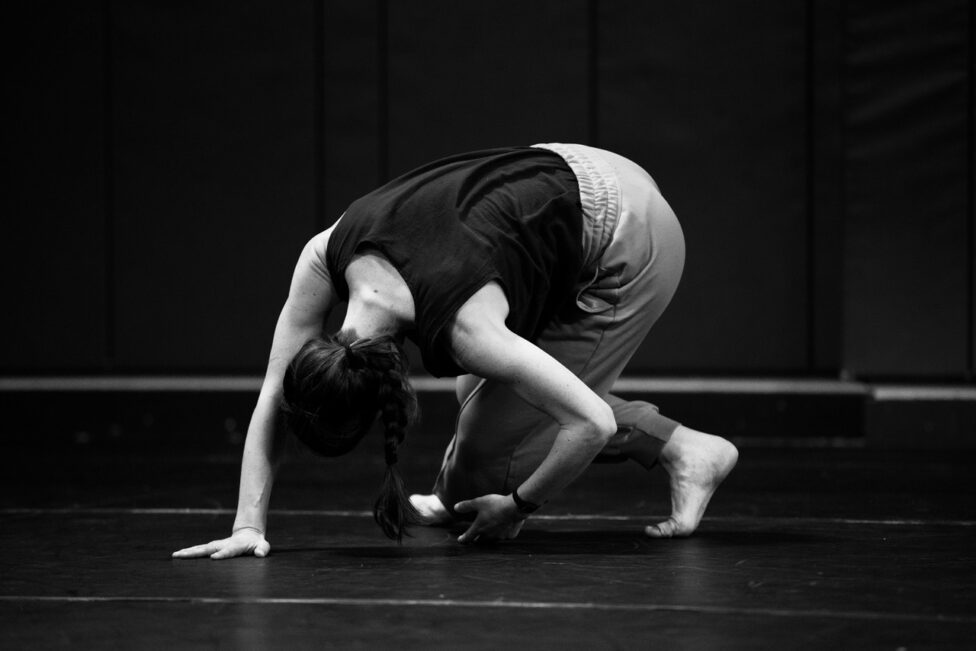
CC
That is really tricky. In terms of the dancers inside a company, we try to keep that balance. As you were saying, newer dancers come in without familiarity with the world. If they’re learning these new works and taking in information from that, how do you make sure that the dancers also engage with the origin of the company?
GC
For us, it’s really important for the new generation of dancers to work with the dancers that had worked with Nai-Ni before. Especially when it comes to male roles, I’m a little bit less familiar. When new dancers, that have never worked with her, teach a piece of choreography, I can really see they just teach it without really paying attention to details. Then it’s so easy to lose. We lose the uniqueness of Nai-Ni’s pieces. I see that the dancers who have worked with her can really help to maintain more of the authenticity of her work.
CC
As a rehearsal director, part of your job is to rehearse the piece, make the piece look good, and make sure you put a rehearsed product on stage. And I think that there is a certain kind of polishing that happens, which is necessary and good, but then that balance, as you say, of trying to return to this original, innate kind of raw quality, naturally over time does…
GC
…evolve, and then it can evolve in a different way, which is not bad. It’s just different, but in a way it kind of loses the real essence.
I always encourage them to study more videos. Then, of course, we work in the studio. Nai-Ni was very open to changing choreography on your body. If you look a little bit better with a certain movement, she was willing to adjust it. That’s also what I’m doing. They learn from the videos, then when we go back into the studio, we work on the piece and the details.
CC
That’s great. In that way, ideally, if you’re really trying to work from the original quality, and that quality comes through in a little bit of a different form, or technically it is not exactly the same shape, but it delivers that original feeling if that leaves room for new dancers to really find themselves inside of the work.
GC
Yeah.
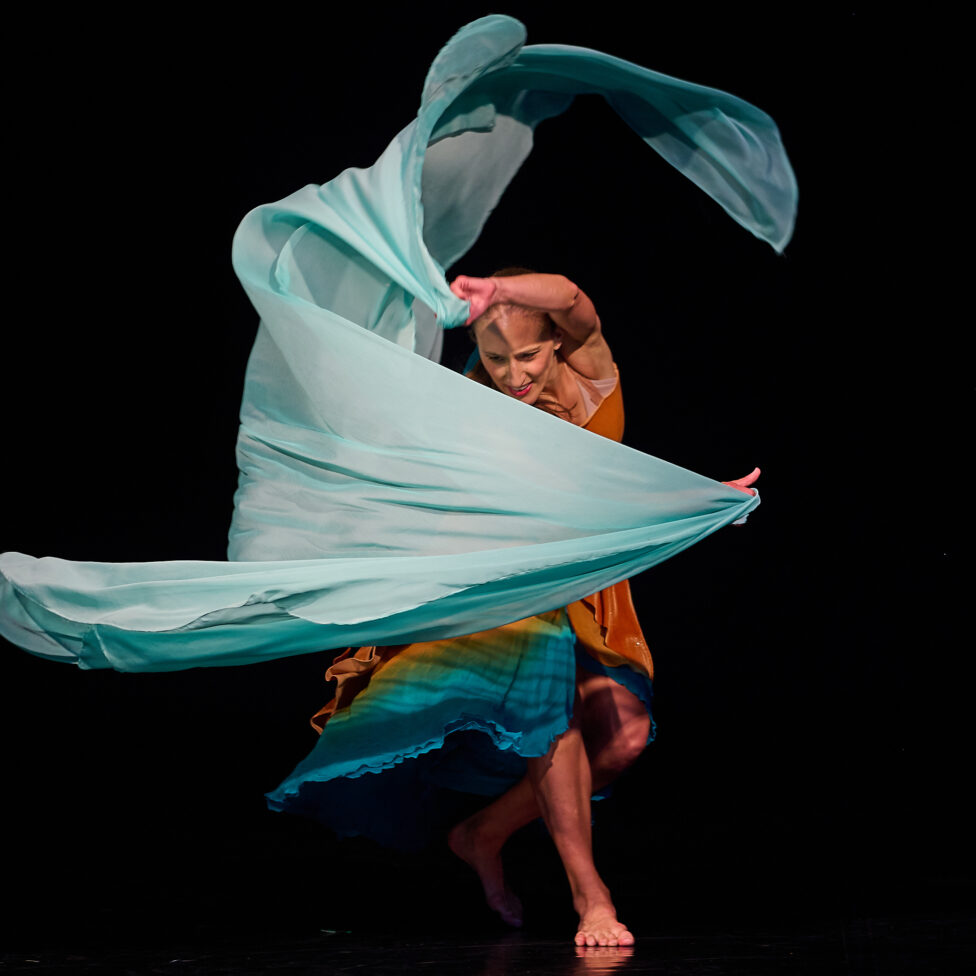
CC
One of the big challenges that I feel is shifting my perception of the pieces themselves, from having being inside them and dancing in them. I move from that perspective, having a map of the piece, and then step outside and learn how to see all of the moving parts of the piece in depth, and be able to figure out where things need to be adjusted. It’s amazing to be working closely with Carolyn. I’ve received that information from her from the inside. Now being with her, and sometimes we’ll be watching together, and I feel like she’s seeing in four dimensions, and I’m seeing it barely two. So I wonder if you experienced that same sort of focal shift.
GC
Yeah, her choreography is quite complex because we barely dance in unison. I’m really starting to understand her work better from outside. When I was a dancer, you needed to pay attention to the other dancers and what you’re doing on stage with them. But now I’m starting to see a different perspective in her choreography.
CC
I have such a deeper appreciation for that outside view and being able to understand all of the planets that are in motion.
GC
Going from being a dancer, dancing in every show, it’s been an interesting transition. During the first year, everything happened so suddenly. I was dancing full time. It was really tough to work when we were going into the theater because I had to pay attention to other stuff like lighting. I was not really focusing on my body and rehearsing. I had other worries. So I was just enjoying the time on stage, the time of the show, but not focusing on my dancing during tech.
Slowly I started to take myself out of the pieces. In the beginning, I was missing dancing. I’ve done it all my life. And then, I started to enjoy this new experience, feeling rewarded in a different way. At the end of the second year, there was a switch in me where I felt just accomplished and fulfilled by this role. Maybe I can still do solos, or stepping in for emergencies, injuries and stuff like that. But, it’s quite hard to do both. We’re now working to have an assistant in rehearsal…also, because I’m pregnant.
CC
Oh my goodness. Congratulations! Wonderful!
GC
It’s going to be another interesting transition! I started to see my life going in a certain direction. It’s not that I don’t want to dance anymore, but I’m very appreciative of this new role. I feel rewarded in a different way, but I still feel there is a lot to learn.
CC
I think that it’s a learning job, for sure… my goodness, it’s so inspiring to hear you, to hear your story, and to see how you have risen to this occasion, and also how it’s shaped your life in unexpected ways.
GC
Are you still dancing?
CC
I am, yeah. I’m just starting this rehearsal period. We’re beginning two reconstructions next season. So those are the first pieces that I won’t dance in because we’re starting brand new. That’s the first time that I’m stepping out and not being in those. But I’m still dancing in some of the repertory that we’re touring this fall and into the beginning of next year. It’s the hybrid mode. It feels good for now. Similarly, I’m very excited and honored about it, but I don’t feel quite ready to be not dancing. And hopefully there’s a fluidity where there can be and needs to be as it feels good for everyone.

